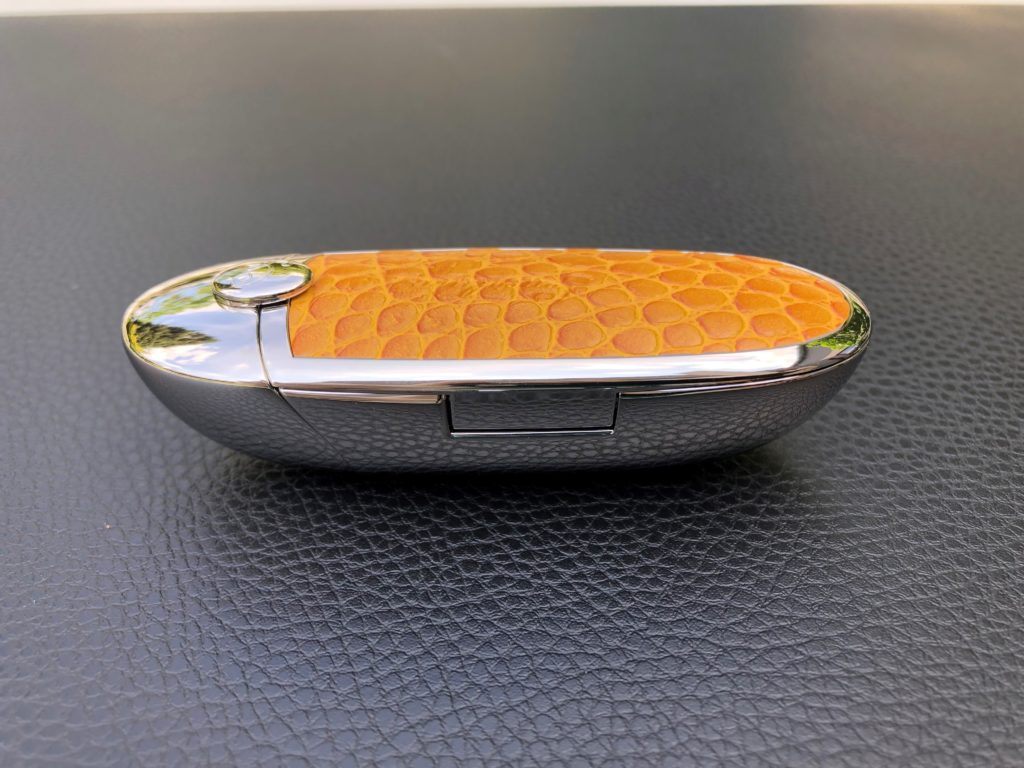
General Court: Lipstick receives trademark protection
The cosmetics company Guerlain was initially refused trademark protection for its lipstick shape. The General Court of the European Union has now approved trademark protection for its special shape.

Judgment of 14.07.2021, ref. T-488/20
Facts of the case
In 2018, French cosmetics group Guerlain applied for registratione of a three-demensional EU trademark consisting of the shape of an elongated lipstick case, flat on one long side, with two round ends. The mark sought protection for “lipsticks” in class 3.
In principle, under Article 7(1)(b) of Regulation (EU) 2017/1001, trademarks which are devoid of any distinctive character are not to be registered. Distinctive character of a trademark means that it enables the product for which registration is sought to be identified as originated from a particular undertaking and thus to distinguish that product from those of other undertakings. This also applies to shape marks.
The European Intellectual Property Office EUIPO rejected the application for registration of this mark and initially refused to grant trademark protection.
The Board of Appeal upheld this decision on the grounds that the shape mark in question was not sufficiently different from the norm or customary in this sector and consequently lacked distinctive character.
The cosmetics company Guerlain appealed against this assessment to the European Court.
Decision
The judges in Luxembourg then annulled the decision of the First Board of Appeal of the EUIPO and found:
- First, the GC held that the required distinctiveness of the mark applied for could not be assessed solely on the basis of originality or novelty within the industry. On the other hand, the fact that the industry is familiar with a large number of product shapes does not mean that any new shape must necessarily be perceived as another variant and thus necessarily lack distinctive character.
- Secondly, all shapes which the consumer is accustomed to seeing on the market must in principle be taken into account. The closer the shape applied for as a trade mark was to the most likely shape of the product in question, the more likely it was to be devoid of distinctive character. Consequently, the deviation had to be significant in order to be able to fulfill the suitability as an indication of origin function.
- Thirdly, it is important that the average consumer perceives the product in a three-dimensional form as a trademark and is able to distinguish it from the products of other undertakings. That assessment was not to be made on the basis of an always subjective quality design or aesthetic appearance, but always on the basis of whether that specific appearance of the mark was capable of producing an objective and, in the eyes of the relevant public, the average consumer who is reasonably well informed and reasonably observant and circumspect, unusual visual impact with a high degree of recognition.
- Fourth, the Court found that in the present case the mark, with its shape reminiscent of a ship’s hull or a crèche, was unusual and significantly different from other shapes on the market. Cylindrical or cuboid lipsticks are customary in the sector.
- Finally, the applicant submits that the fact that the lipstick represented by the mark cannot be placed upright reinforces the fanciful and unusual visual impression of the shape. The relevant public would be surprised by that shape, which is, moreover, easy to remember, and would perceive it as departing significantly from the norm and customs in the lipstick sector. It is thus capable of indicating the origin of the goods concerned. Consequently, the three-dimensional mark also had distinctive character.
Therefore, the refusal based on Article 7(1)(b) of the Community Trade Mark Regulation is not justified. The trademark applied for may therefore be registered.
Consequences for practice
Many products have a distinctive shape and thus a special design that should be protected to keep away any imitators. If this shape is new, it is common to have this shape protected by a design patent. This protection ends after 25 years.
An alternative is protection as a three-dimensional trademark, which on the one hand can be applied for even years after the first publication and on the other hand allows protection for an unlimited period of time.
For a 3-D shape to be recognized as a trade mark, it is decisive whether the chosen shape has unusual features, deviates significantly from the norm and shape customary in the industry and this shape can be recognized by the consumer as an indication of origin for the goods in question.
With the decision of the court, another aspect now joins the assessment components, namely the “surprising element”, which can be perceived as outside the norm and serve as an indication of origin for the relevant public.
Even though proving distinctiveness is more challenging for this form of trademark than for conventional trademarks, there is a tendency to increasingly grant trademark protection to three-dimensional shapes. This opportunity should be seized.
Further landmark decisions on trademark protection of shape marks
- Judgment of the General Court of 8 July 2020 in Case T-573/18, Hickies v EIPO [Shape of a shoelace] [2020] ECR I-0000, paragraph 63) T:2020:32, paragraph 63 and the case law cited therein].
- Judgment of the General Court of 25 November 2020 in Case T-862/19, Brasserie St Avold v EIPO [Shape of a dark bottle], EU:T:2020:561, paragraph 56).
Do you have questions about this article? Contact us

Gracia-Regina Blumenröhr
Legal Counsel